‘An Extraordinarily Significant Undertaking that No One Else in this World is Capable of Doing’ by Peter Hawkins
- Our Alaskan Schools Blog
- Jun 4, 2024
- 4 min read
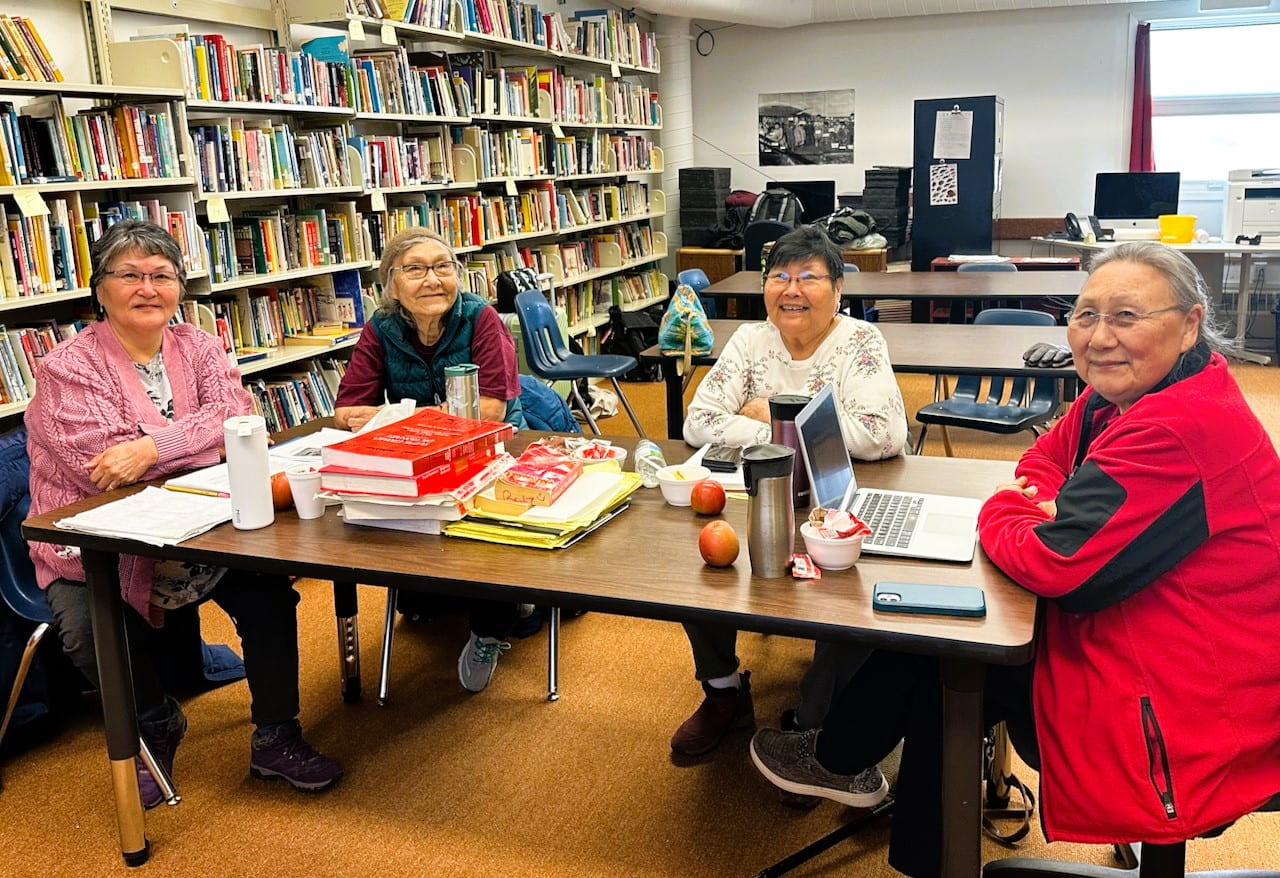
Each school day at 1pm, four elders make their way up the ramp at Nuniwarmiut School. Upon entering the building, they turn right and walk past the pre-school room. They stop by the office to greet the secretary and the principal and make their way down the hallway past the junior high and high school classrooms where students and teachers are collaboratively working on learning. They enter the library/meeting room at the end of the hall. They close the door and install themselves around one of the large tables where there is a collection of notepads, pencils, erasers, dictionaries and snacks just as they left them the day before. They are soon focused together on an extraordinarily significant undertaking that no one else in this world is capable of doing.
Language and culture are inextricably intertwined. One can never truly understand a culture unless one speaks the language of that culture. One can never truly speak and fully comprehend a language without understanding the culture of that language. Each language is very rich and expresses the full extent of the human experience as perceived and expressed in the context of its culture. If a language disappears, so does the culture it expresses; and never again will one understand the world in the way the people of that culture do.
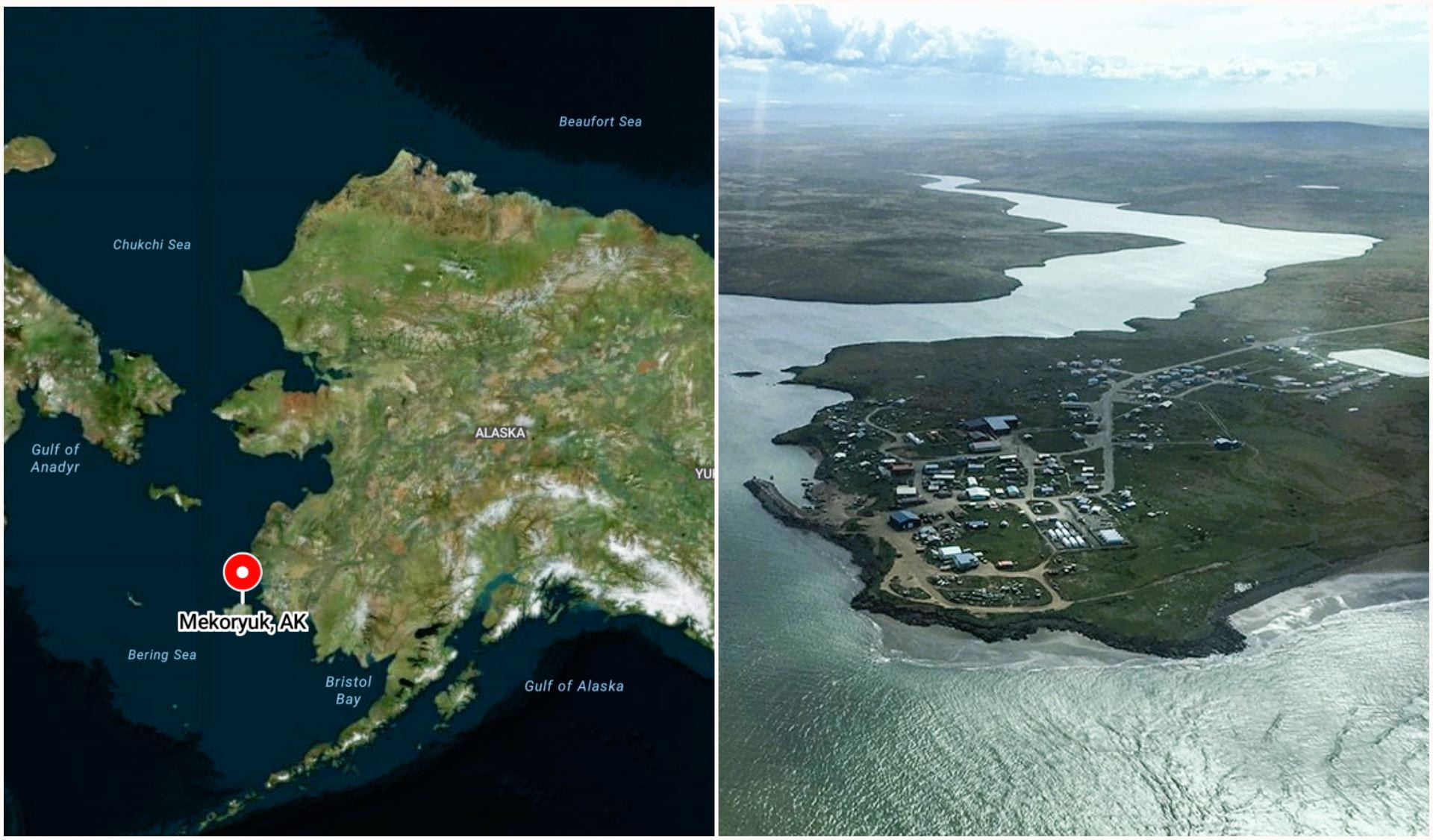
Mekoryuk is a small village of 200 souls situated about 30 miles off the Yukon-Kuskokwim Delta, in the Bering Sea. It is the only village on Nunivak Island and home to Nuniwarmiut School which is part of the Lower Kuskokwim School District (LKSD). There are about 50 students preK-12 who attend Nuniwarmiut School. Cup’ig is a dialect of the Central Alaskan Yup’ik Eskimo Language and is only spoken on Nunivak Island. Cup’ig is to be differentiated from the Cup’ik dialect that is spoken on the mainland farther north. It is reported that Cup’ig is different enough from the mainland Yup’ik that Yup’ik speakers can only understand about half of what is being said between Cup’ig speakers.
The Cup’ig language is significant in its own right. The waters around Nunivak Island are very shallow, which prevented the big ships from coming in and as a result, the first contact with the outside world came very late. The photographer Edward Curtis recorded in 1927 that no white missionaries had ever come to Nunivak Island. In fact, the first missionaries to come to Nunivak Island were Inupiat in the 1930’s. Due to the limited influence from the outside world, Margaret Lantis, an anthropologist from the University of California at Berkley, who spent eleven months on Nunivak Island in 1939 studying the social culture of the Nunivak Eskimo, believed that the language and the culture of Nunivak Island were the purest representation of the Yup’ik culture prior to outside contact. As such, the Cup’ig culture and language hold a key to better understanding the original Yup’ik culture and language.
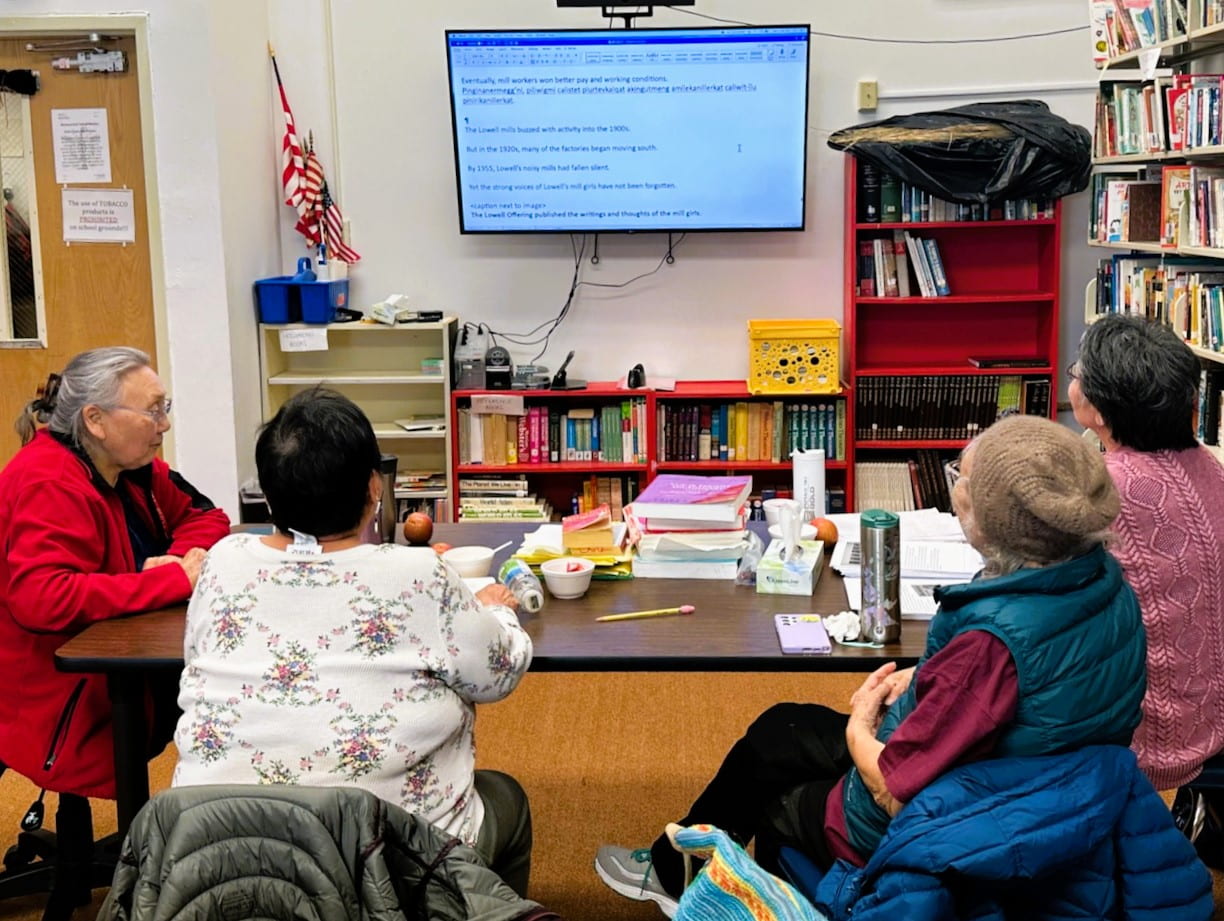
At present, the residents of Mekoryuk aged in their mid-fifties and older still speak Cup’ig fluently. Their children, who are the parents of the children in the school, still understand Cup’ig but generally do not speak it to their children. As a result, the children of Mekoryuk come to school with English as their first language. Recognizing the serious risk of losing their language, the people of Mekoryuk chose to implement a Dual Language Enrichment (DLE) program at Nuniwarmiut School so that the Cup’ig language and culture would not be lost. As a result, the school is developing a Dual Language Enrichment model where the students learn both English and Cup’ig language, culture and traditions.
LKSD has adopted a DLE model based on the work of Gómez and Gómez in the state of Texas. Their work, which is primarily based in a Spanish-English context, has been adapted to the Yup’ik-English context of the Kuskokwim Delta region. In a very cursory way one might explain that in this model, the elementary students learn Social Studies, Science and Yup’ik Language Arts in Yup’ik. They learn English Language Arts and Math in English. The vocabulary of each content area is then transferred to the other language through bilingual learning centers and bilingual research centers.
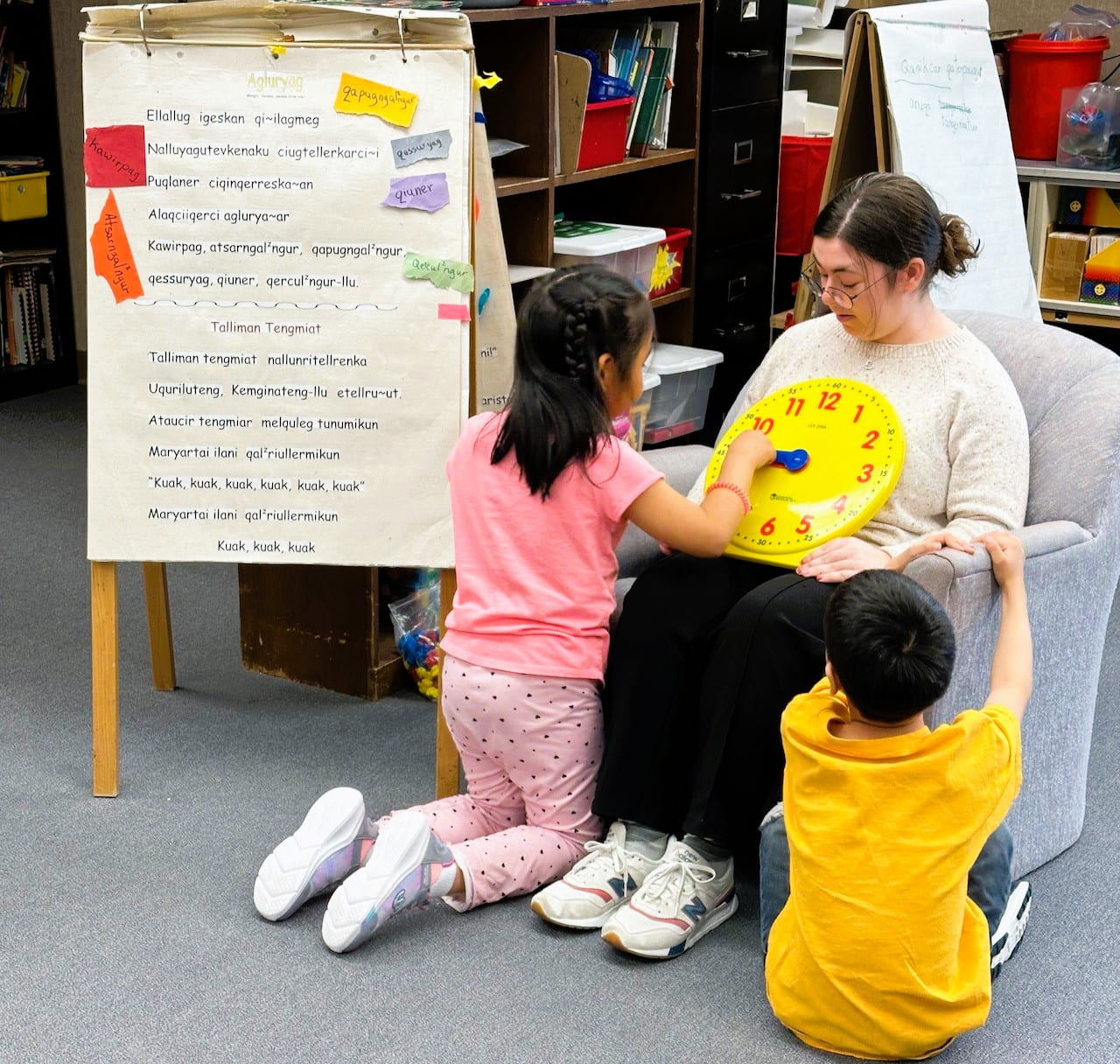
LKSD has done the work to localize the necessary textbooks and to translate them into Yup’ik for the schools that have adopted this DLE model. More recently, LKSD has developed a Yup’ik Proficiency Test, the Yugtun Piciryaranek Qaneryaranek-llu Cuqyun (YPQC). This unique assessment has not been translated from English into Yup’ik, but rather was developed in Yup’ik by the Yup’ik people to measure the proficiency of our students both in their capacity to comprehend and express themselves in Yup’ik as well as basic understanding of distinct Yup’ik cultural practices. This one-of-a-kind assessment was fully implemented in the spring of 2024 district wide.
Nuniwarmiut School has faced several challenges while developing the DLE model. These resources, textbooks and the YPQC, did not exist in Cup’ig. In addition, the Cup’ig language is traditionally only an oral language. In an oral language, knowledge and wisdom are transmitted from one individual speaker to another and then passed on orally from one generation to the next. Once language is committed to the written page, those thoughts and expressions will last for centuries. Much work has been done, particularly and most recently by Steven and Anna Jacobson at the University of Alaska Fairbanks, to standardize the orthography of the Yup’ik language. Apart from a limited effort at the turn of the 21st century, very little has been done for standardizing the orthography of the Cup’ig language.
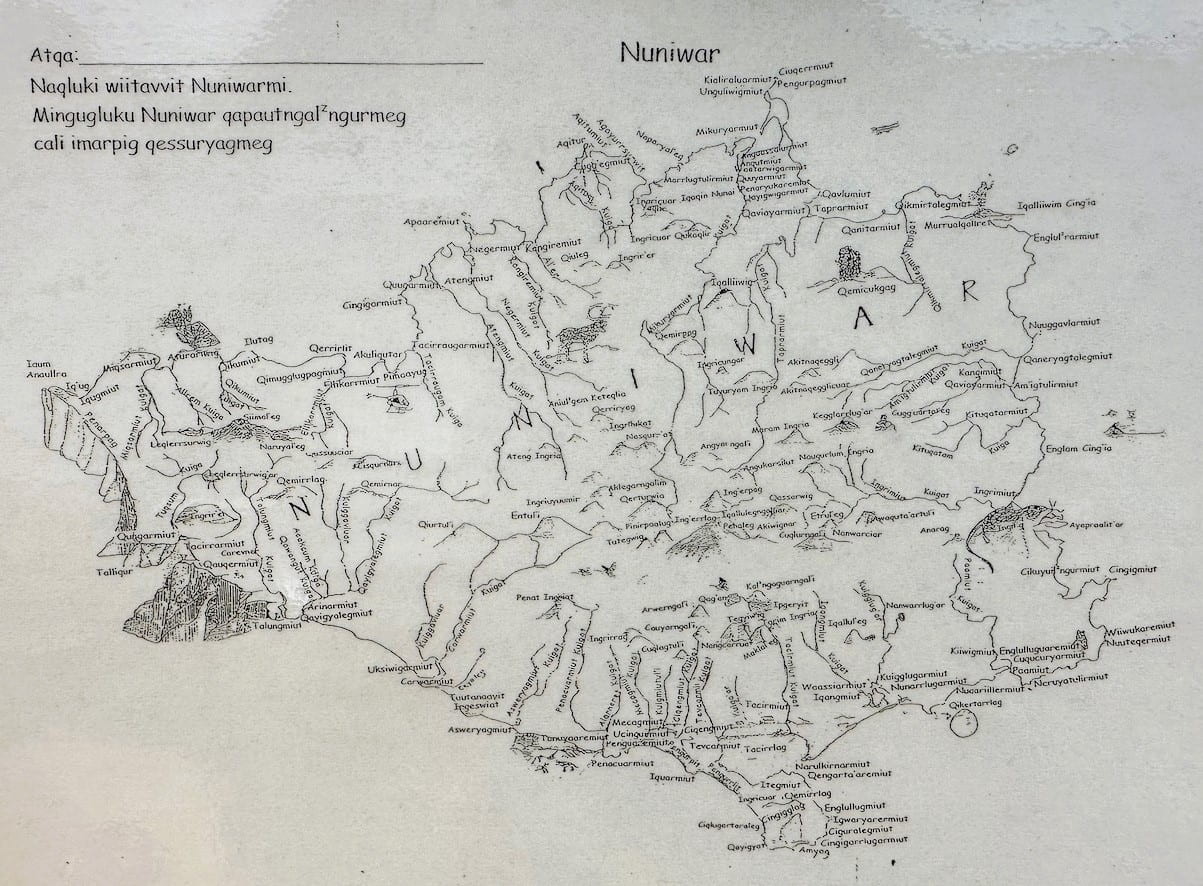
The extraordinarily significant undertaking that these four elders so faithfully come to Nuniwarmiut School each school day to accomplish is translating these materials into the Cup’ig language for the use of the students in the Kindergarten through 5th grade classrooms at the opposite end of the school building. The translation team is comprised of elders for the expressed purpose of documenting the oldest version of Cugtun that is still in existence. The team began in earnest in the fall of 2019 on the translation of the District Approved Social Studies curriculum into Cup’ig. Three of the six textbooks are currently in print and being used by our students. The three other textbooks are in varying stages of translation and editing with the expectation that we will see those textbooks in print and in the classrooms within the next few years. The team is currently working on translating the YPQC into the Cugtun Piciryaraneg Qaneryaraneg-llu Elissnataciller (CPQE) with the hopes of implementing this assessment in the spring of 2025.




Comments